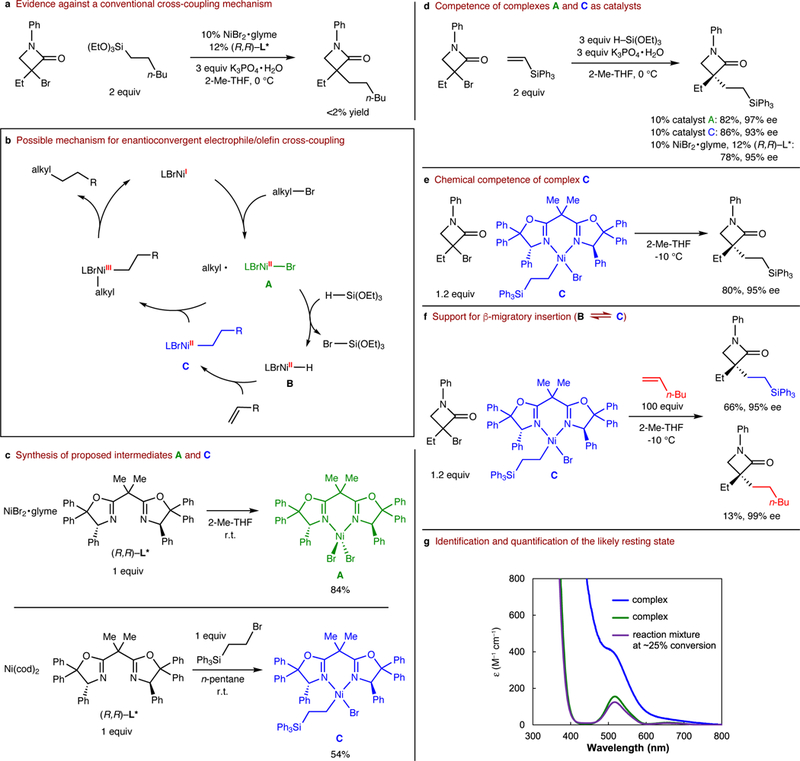Figure 4|. Mechanism.

a, Evidence against a conventional cross-coupling mechanism. b, Possible mechanism for enantioconvergent electrophile/olefin cross-coupling (for the sake of simplicity, all steps are drawn as irreversible; H-Si(OEt)3 represents the hydrosilane activated by K3PO4•H2O). c, Synthesis of proposed intermediates A and C. d, Competence of complexes A and C as catalysts. e, Chemical competence of complex C. f, Support for β-migratory insertion. g, Identification and quantification of the likely resting state via UV-vis spectroscopy (coupling partners illustrated in d, using10% NiBr2•glyme/12% (R,R)-L*, at ∼25% conversion).
